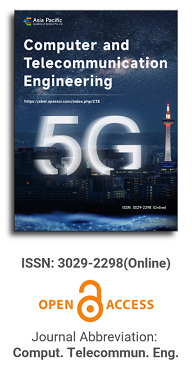
IoT forensics: Challenges, methodologies, and future directions in securing the Internet of Things ecosystem
Vol 2, Issue 4, 2024
Download PDF
Abstract
The rapid growth of the Internet of Things (IoT) has significantly impacted digital forensics, introducing both new opportunities and challenges. IoT forensics, a specialized field within digital forensics, focuses on the acquisition, analysis, and interpretation of data from diverse IoT devices such as smart home systems, wearables, and industrial platforms. This review examines the current state of IoT forensics, highlighting challenges such as device diversity, data volatility, encryption, and the need for real-time analysis. It also evaluates existing forensic methodologies and tools, assessing their effectiveness and limitations in addressing these challenges. Furthermore, the paper identifies critical research gaps and proposes future directions, including the development of standardized forensic frameworks and greater collaboration between IoT manufacturers and forensic experts. The aim is to advance IoT forensic practices to keep pace with rapidly evolving IoT technologies, thereby enhancing the investigation and prosecution of cybercrimes.
Keywords
References
- Zawoad S, Hasan R. IoT Forensics: Research Challenges and Future Directions. In: Proceedings of the 2015 IEEE International Conference on Services Computing; 27 June to 2 July 2015; New York, USA.
- Perumal S, Norwawi N, Raman V. Internet of Things (IoT) digital forensic investigation model: Top-down forensic approach methodology. In: Proceedings of the 2015 Fifth International Conference on Digital Information Processing and Communications; 7–9 October 2015; Sierre, Switzerland.
- Oriwoh E, Sant P. The forensics edge management system: A concept and design. In: Proceedings of the 2013 International Conference on Adaptive Science & Technology; 25–27 November 2013; Pretoria, South Africa.
- Daryabar F, Dehghantanha A, Choo KR. Forensics of two cloud storage services: Dropbox and Ubuntu One. Australian Journal of Forensic Sciences. 2015; 47(1): 94–107. doi: 10.1080/00450618.2014.922286
- Zhou B, Yang F, Rao L. Smartphone Forensics: Enhanced State Consistency with Contextual Information. In: Proceedings of the 2019 IEEE International Conference on Communications; 20–24 May 2019; Shanghai, China.
- Nawir M, Amir A, Yaakob N, et al. Internet of Things (IoT): Taxonomy of security attacks. In: Proceedings of the 2016 3rd International Conference on Electronic Design; 11–12 August 2016; Phuket, Thailand.
- Conti M, Dehghantanha A, Franke K, et al. Internet of Things security and forensics: Challenges and opportunities. Future Generation Computer Systems. 2018; 78: 544–546. doi: 10.1016/j.future.2016.11.031
- Abomhara M, Koien GM. Cyber security and the internet of things: Vulnerabilities, threats, intruders and attacks. Journal of Cyber Security and Mobility. 2015; 4(1): 65–88. doi: 10.13052/jcsm2245-1439.413
- Weber RH. Internet of Things—New security and privacy challenges. Computer Law & Security Review. 2010; 26(1): 23–30. doi: 10.1016/j.clsr.2009.11.008
- Granjal J, Monteiro E, Silva JS. Security for the Internet of Things: A Survey of Existing Protocols and Open Research Issues. IEEE Communications Surveys & Tutorials. 2015; 17(3): 1294–1312. doi: 10.1109/COMST.2015.2388550
- Sivaraman V, Gharakheili HH, Vishwanath A, et al. Network-level security and privacy control for smart-home IoT devices. In: Proceedings of the 2015 IEEE 11th International Conference on Wireless and Mobile Computing, Networking and Communications; 19–21 October 2015; Abu Dhabi, United Arab Emirates.
- Mahmoud R, Yousuf T, Aloul F, et al. Internet of things (IoT) security: Current status, challenges, and prospective measures. In: Proceedings of the 2015 10th International Conference for Internet Technology and Secured Transactions; 14–16 December 2015; London, United Kingdom.
- Hassan NA. Introduction: Understanding Digital Forensics. Digital Forensics Basics. 2019; 1–33.
- Wireshark. Wireshark User Guide. Available online: https://www.wireshark.org/docs/wsug_html/ (accessed on 2 November 2024).
- SolarWinds. Network Performance Monitor. Available online: https://www.solarwinds.com/network-performance-monitor (accessed on 2 November 2024).
- AccessData. FTK Imager. Available online: https://accessdata.com/product-download/ftk-imager-version-4-2-1 (accessed on 2 November 2024).
- Cellebrite. UFED Physical Analyzer. Available online: https://cellebrite.com/en/ufed-physical-analyzer/ (accessed on 2 November 2024).
- ElcomSoft. Cloud Explorer. Available online: https://www.elcomsoft.com/Cloud-Explorer.html (accessed on 2 November 2024).
- OpenText. EnCase Forensic. Available online: https://www.opentext.com/products-and-solutions/products/endpoint-and-investigation/encase-forensic (accessed on 2 November 2024).
- Splunk. Splunk Enterprise. Available online: https://www.splunk.com/en_us/software.html (accessed on 2 November 2024).
- MITRE. MITRE ATT&CK Framework. Available online: https://attack.mitre.org/ (accessed on 2 November 2024).
- Elastic. Elastic Stack (ELK). Available online: https://www.elastic.co/what-is/elk-stack (accessed on 2 November 2024).
- MSAB. XRY. Available online: https://www.msab.com/products/xry/ (accessed on 2 November 2024).
- X1. X1 Cloud Collector. Available online: https://www.x1.com/cloud-collector/ (accessed on 2 November 2024).
- The Sleuth Kit. Autopsy. Available online: https://www.sleuthkit.org/autopsy (accessed on 2 November 2024).
- Hsu HH, Yang CC. IoT forensics: A survey on challenges and research directions. Journal of Forensic Sciences. 2020; 65(1): 45–59. doi: 10.1111/1556-4029.14238.
- Soni N, Kaur M, Bhardwaj V. A forensic analysis of AnyDesk Remote Access application by using various forensic tools and techniques. Forensic Science International Digital Investigation. 2024; 48: 301695.
- Nishchal S. Forensic Analysis of WhatsApp: A review of techniques, challenges, and future directions. Journal of Forensic Science and Research. 2024; 8(1): 19–24.
- Soni N, Kaur M, Aziz K. Decoding digital interactions: An extensive study of TeamViewer’s Forensic Artifacts across Windows and android platforms. Forensic Science International Digital Investigation. 2024; 51: 301838. doi: 10.1016/j.fsidi.2024.301838
Supporting Agencies
Copyright (c) 2024 Nishchal Soni
License URL: https://creativecommons.org/licenses/by/4.0/

Prof. Maode Ma
Qatar University, Qatar
The field of computer and telecommunications engineering is rapidly advancing, with the following being some of the latest developments.
more
We are pleased to congratulate the first anniversiry of the journal of Computer and Telecommunication Engineering (CTE).
more
Owing to the tireless dedication of the editor-in-chief, editorial board members, and the in-house editorial team, we are proud to announce the successful online launch of the first issue of Computer and Telecommunication Engineering.
Asia Pacific Academy of Science Pte. Ltd. (APACSCI) specializes in international journal publishing. APACSCI adopts the open access publishing model and provides an important communication bridge for academic groups whose interest fields include engineering, technology, medicine, computer, mathematics, agriculture and forestry, and environment.


.jpg)

.jpg)
